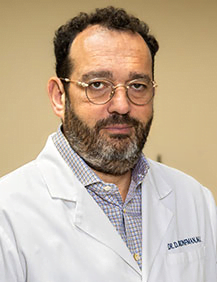The Only NYS Approved by
DOH Surgical Facility
*Same Day Appointments & Walk-Ins Welcome
The Only NYS Approved by
DOH Surgical Facility
*Same Day Appointments & Walk-Ins Welcome

Cervical polyps are extra-growths that arise from the cervix or opening of the uterus. These growths are smooth and spongy tags of tissue that appear like a finger and are usually red in color. Generally, they do not exceed 1 cm in length. Cervical polyps are often symptomless and may go undetected for years, until the woman undergoes a routine pelvic or gynecological exam. In most cases, polyps are harmless and rarely cancerous in nature. These cervical outgrowths often tend to affect women above 20 years of age who are post-menarche and pre-menopausal, particularly women who are multipara or who have undergone multiple pregnancies. Generally, a cervical polyp may occur singly, although some women may have more than one polyp too.
The cause of cervical polyps is still unknown. Hence, no one really knows why one woman may develop a cervical polyp while another may not under similar circumstances. Nevertheless, long standing cervical inflammation, higher estrogen levels, or congested and clogged blood vessels in the cervix are likely to increase the risk of developing a cervical polyp.
Most cervical polyps do not produce any symptoms and tend to go undetected until the woman undergoes a routine pelvic exam for some other reason. However, some polyps may result in abnormal bleeding from the vagina that may occur between two consecutive menstrual periods, after the woman has achieved menopause, after or during sexual intercourse, or after douching. An infected cervical polyp may also result in yellowish white discharge and inflammation. However, such infections are rare.
Most cervical polyps do not need treatment, unless they begin to produce cumbersome symptoms like vaginal bleeding or if they are infected. The only treatment for a cervical polyp is excision or removal. This may be done with a ring forceps or by tying the stalk of the cervical polyp with a surgical string and cutting-off the rest of the polyp below the string. The base is then cauterized with a laser to prevent bleeding. An infected polyp may also require an additional course of antibiotics. Cervical polyps are generally benign or noncancerous, with only 1% of them turning into cancerous legions. Hence, the polyp once excised is not likely to be tested further. However, some doctors may get a histological study done to get a confirmed diagnosis.

Dmitry Bronfman, MD, is a board-certified gynecologist who specializes in all aspects of contemporary women’s health, preventive medicine, pelvic pain, minimally invasive and robotic surgery, and general, adolescent, and menopausal gynecology.
Brooklyn Abortion Clinic